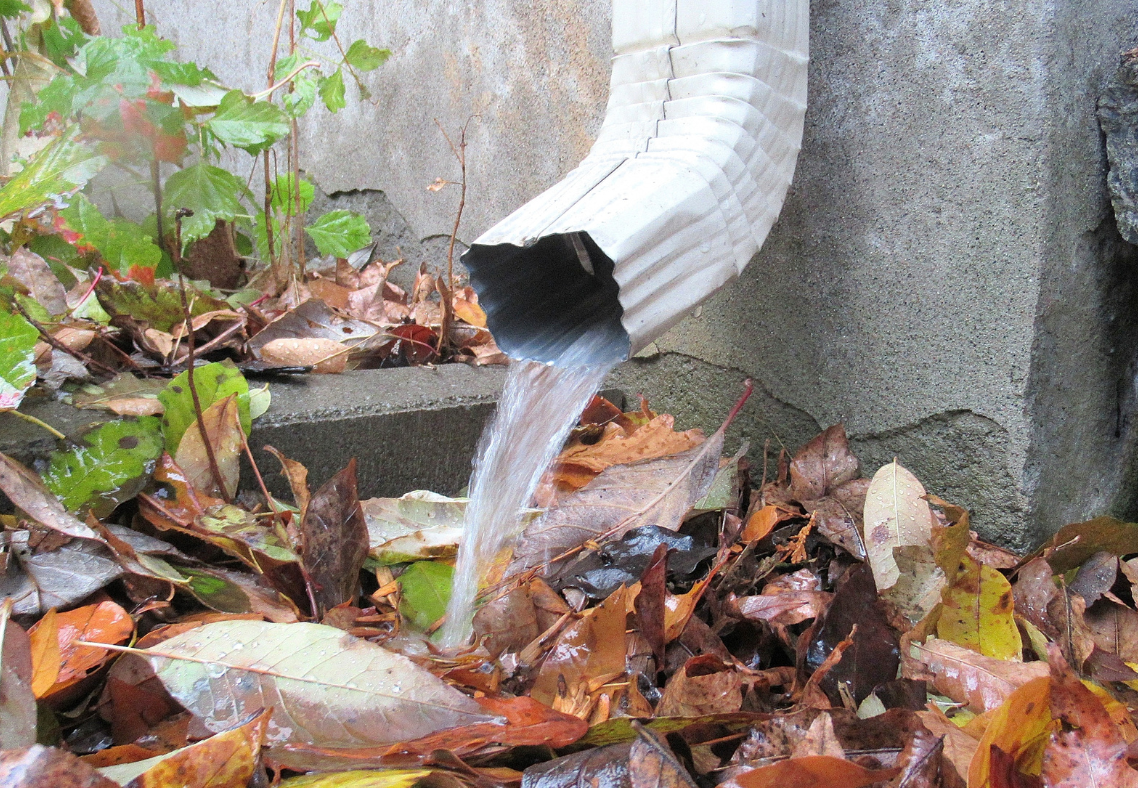How To Unclog A Gutter Downspout For Maryland Homeowners
Roof Right: Exterior Home Remodeling Specialists in Maryland Contact UsSchedule A Free EstimateGutters and downspouts are essential for directing water safely away from your roof, walls, siding, and foundation. But when debris builds up—leaves, twigs, pine needles, moss, or even roofing granules—your downspouts can clog. In Maryland’s climate, with heavy rainstorms, fall leaf drop, salty coastal air (in some areas), and freeze‑thaw cycles, a clogged downspout can contribute to overflow, damage, and leaks. In this guide, we’ll walk you through how to unclog a gutter downspout safely and effectively, plus tips for prevention in the Maryland setting.
Answering The Question: How To Unclog A Gutter Downspout For Maryland Homeowners
Why Downspouts Clog and Why It Matters in Maryland
Downspouts clog for simple reasons: debris from the gutters falls into the vertical pipe, or material accumulates at bends, elbows, or underground extensions. The top and bottom openings, elbows, or connecting joints are common trouble spots. Clogged downspouts matter because water that cannot escape backs up in your gutters, overflows at the edges, and can infiltrate roof edges, fascia, soffits, siding, or even foundation walls over time. In Maryland, where you contend with heavy rains, storms, and sometimes salt air or humidity, the risk of damage is greater if water is not properly drained. Overflowing water may saturate siding, erode soil around the foundation, or worsen freeze‑thaw damage in cold months.
Tools and Safety Gear You’ll Need
Before you begin, gather these items and take safety precautions:
- Sturdy ladder placed on a solid, level surface
- Ladder stabilizer or standoff if possible
- Gloves
- Safety glasses or goggles to protect your eyes
- Garden hose with a spray nozzle
- Plumber’s snake, auger, or drum auger
- Screwdriver or drill
- Bucket or trash bag to collect debris
- Waterproof sealant
Always have a partner to help steady the ladder or hand tools if needed. Never lean off the ladder too far. Avoid doing this work right after rain or when surfaces are slippery.
Step‑by‑Step Process to Unclog a Downspout
Here’s a practical sequence of steps for Maryland homes:
1. Start by Clearing Gutters
Before dealing with the downspout, remove debris from the horizontal gutters. If the gutters are clogged, you risk pushing more debris into the downspout and worsening the blockage. Scoop out leaves, twigs, and sediment, then flush lightly to move loosened material toward the downspout. This makes the downspout cleaning more effective.
2. Check the Bottom Extension
At ground level where the downspout exits, often there is an elbow or extension. Detach or remove that bottom section if possible. Many clogs start there. With the bottom open, debris may fall out freely. Wear gloves—some material may be mushy or stuck. If the extension is buried or underground, you may need specialized tools or professional help.
3. Flush From the Top with a Hose
After bottom clearing, insert your garden hose into the top of the downspout (through the gutter opening). Turn on water to full pressure and see if flow comes out the bottom. If water flows freely, the clog is likely cleared. If water backs up, stop and proceed to the next step. Use care not to damage gutter joints or seams with high pressure.
4. Use a Plumber’s Snake or Auger
If flushing doesn’t clear the clog, feed a flexible metal snake or auger into the downspout. Turn slowly and gently advance until you feel resistance—this is likely the clog. Rotate to break up or snag debris, then retract. Repeat as necessary until you can flush water cleanly through. Many homeowners report that the snake is effective for typical blockages.
5. Knock the Sides Gently (Optional)
While flushing or after using the snake, sometimes gently tapping or knocking on the outside of the downspout helps dislodge clinging debris. Use the back of a gloved hand or rubber mallet lightly to avoid deforming the downspout. Then flush again to see if water moves freely.
6. Replace Elbows or Reattach Extensions
Once the clog is cleared, reattach any sections you removed (elbows, extensions). Make sure seams and joints are tight. Check for signs of corrosion or damage; if any section is cracked or bent, consider replacing it. After reattachment, perform a final flush test to verify full drainage.
7. Seal Leaks and Ensure Proper Flow
Inspect downspout joints, seams, and connections for leaks or gaps. Use gutter/downspout sealant to patch small holes or cracks. Also verify that the downspout directs water well away from the foundation or tie into a proper drainage outlet. Standing water near the base can cause foundation or moisture problems.
Special Cases and Underground Extensions
Sometimes a downspout continues underground via PVC or corrugated pipe to a storm drain or dry well. In those cases, the clog may be farther down in the buried section and require special equipment or jetting. Professional drain jetting may be needed to clear buried extensions. If your downspout system leads to underground catch basins, you may need to clear that access point too. If debris flows through the downspout but cannot exit underground, the problem is in the extension, not the visible section. Proper diagnosis is vital so you don’t repeatedly clear visible downspouts while the real blockage is hidden.
Preventive Measures to Reduce Future Clogs
Unclogging downspouts is easier if you adopt preventive strategies:
- Install strainers or filters at the gutter opening above each downspout to block large debris.
- Use gutter guards or leaf screens to reduce entry of leaves and twigs into gutters.
- Trim overhanging branches to reduce leaf load into gutters.
- Inspect and clean at least twice a year (spring and fall) or more often if many trees are nearby.
- During heavy storms or after storms, check for debris accumulation or sagging gutters early.
- Ensure gutters are pitched properly toward downspouts. Poor slope can leave water stagnant, aggravating clogs.
- Maintain downspout extensions that lead water away from the foundation and avoid soil erosion.
These steps help minimize how often you must perform unclogging.
Tips and Warnings Specific to Maryland Homes
- Choose mild, dry days for cleaning—for safety and to avoid working on wet, slippery surfaces.
- In Maryland’s fall months, leaf drop can be heavy; plan your gutter work after most leaves have fallen but before heavy rains begin.
- Watch for mildew, mold, or moss in gutters and downspouts caused by humid conditions; flush thoroughly to remove.
- If your downspouts tie into old underground drains (common in older Maryland homes), be aware that those pipes may have collapsed or plugged over time—unclogging the above ground portion may not fully resolve drainage.
- Use care not to damage paint or siding while working around downspouts.
- Always practice ladder safety. If gutters are too high or if the house is more than two stories, consider hiring a professional.
Contact Roof Right For A Gutter Cleaning Services In Maryland
If you live in Hampstead, Carroll County, Baltimore County, or anywhere in Maryland and are struggling with clogged downspouts or gutter issues, contact Roof Right for a gutter cleaning service in Maryland. Our team will safely clear your downspouts, flush your gutters, repair leaks, and help you install preventive devices like strainers or guards. We have the skilled tools and experience to handle multi‑story homes, wooded properties, and underground drainage connections. Let us take the risk, strain, and mess off your hands and keep your home protected from water intrusion. Reach out today to schedule your service and enjoy reliable, professional gutter care from Roof Right.
Areas We Serve
If you're looking for a roof contractor in Maryland, give Roof Right a call today at (410)-374-5923 to schedule an appointment!
Carroll County
Howard County
Clarksville, Columbia, Elkridge, Ellicott City, Fulton, Jessup, Laurel, Woodstock
Montgomery County
Baltimore County
Baldwin, Bradshaw, Carney, Cockeysville, Glen Arm, Hunt Valley, Jacksonville, Kingsville, Lutherville, Nottingham, Overlea, Owings Mills, Parkton, Parkville, Perry Hall, Phoenix, Pikesville, Reisterstown, Sparks, Timonium, Towson, White Marsh

